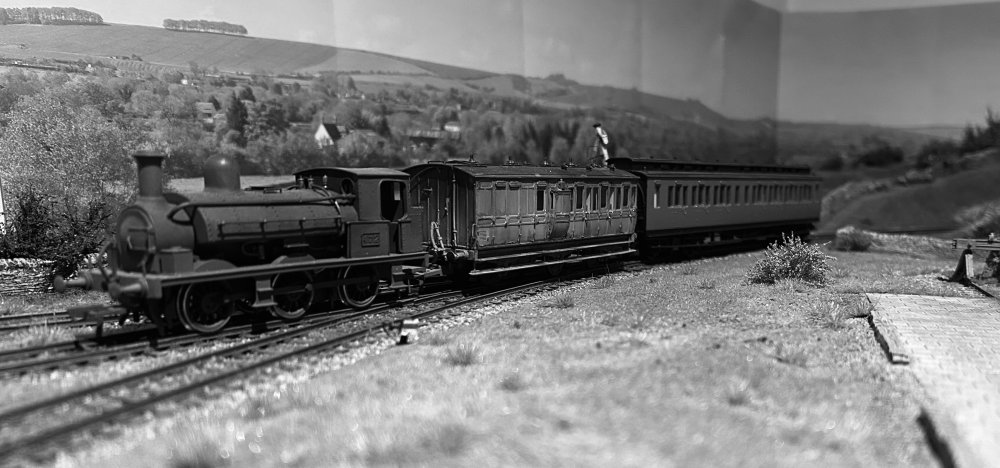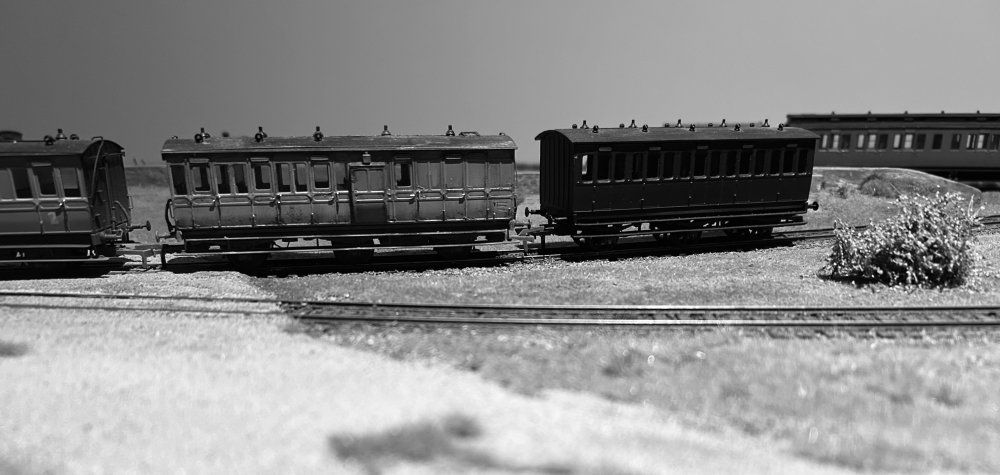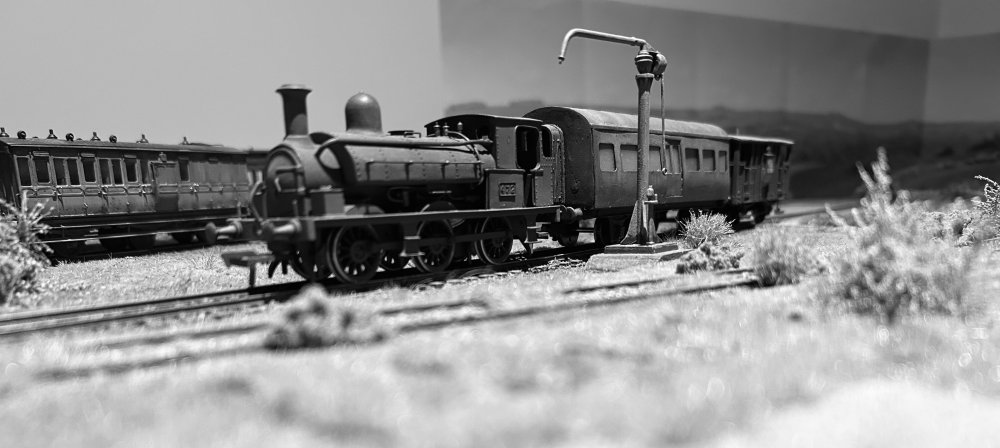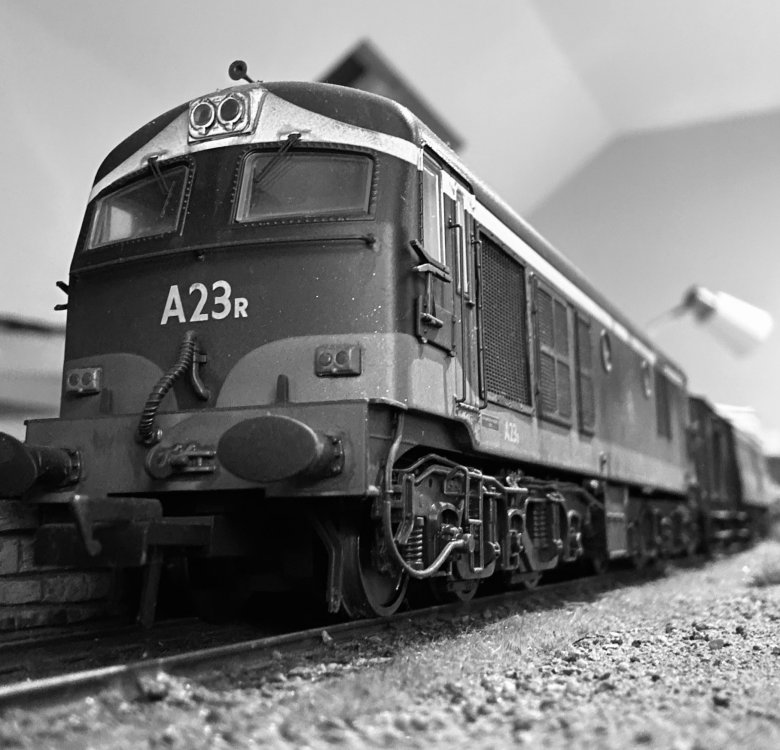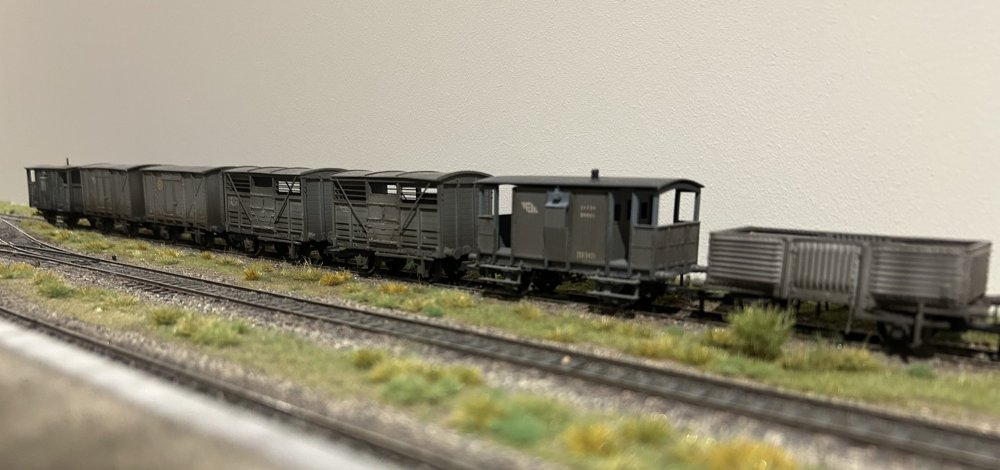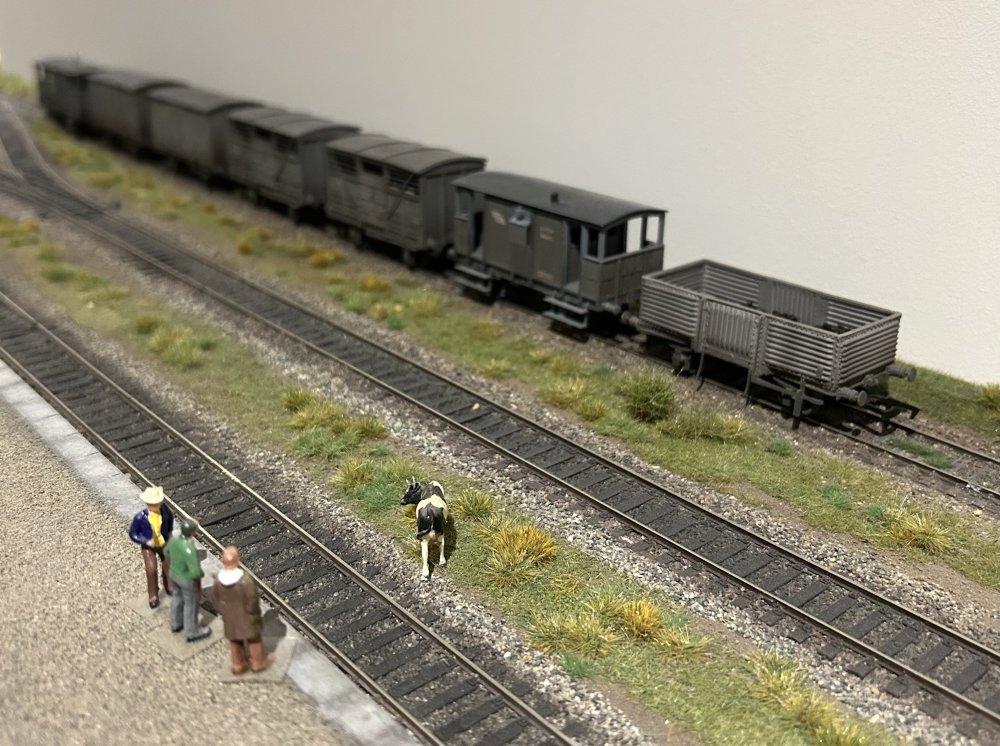-
Posts
15,815 -
Joined
-
Last visited
-
Days Won
393
Content Type
Profiles
Forums
Events
Gallery
Blogs
Store
Community Map
Everything posted by jhb171achill
-
On a point raised earlier, were all 100 in that batch outshopped in green. The answer is no; eye witnesses at the time suggest as few as half a dozen were. I’ve looked into this in detail myself over the years to such extent as I can, but no definitive answer to the question of the actual number is forthcoming. Had even, say, 20 or 30 appeared in green, they’d have been commonly seen about the place for years, but they weren’t. Any built new after mid to late 1962 are almost certain to have been grey from the start, and it seems clear that those which DID wear green, did not do so for long. As as child, personally I never saw one, despite numerous visits to Inchicore, Amiens St, and Westland Row, and occasional forays around Kingsbridge.
-
I probably have - I’ll check. However, while I’ve a full set of GSR / CIE 1926 to the 1970s, and a few outside that, my GNR stuff has many gaps. I’ll check and report back.
-
Making an ‘E’ – the Maybach Diesel Model Assembly thread
jhb171achill replied to Mol_PMB's topic in Irish Models
That certainly looks right, based on an original "snail" I'm looking at right now.... -
Making an ‘E’ – the Maybach Diesel Model Assembly thread
jhb171achill replied to Mol_PMB's topic in Irish Models
Top left there is closest. RAL is 130 70 40. -
Making an ‘E’ – the Maybach Diesel Model Assembly thread
jhb171achill replied to Mol_PMB's topic in Irish Models
It was the standard “eau-de-nil” - the numbers were transfers. Note to the general community; anyone with a silverfox model of a silver prototype will probably have black lettering on it, and possibly black roofs too. This, like many livery details on silverfox’s Irish models, is entirely incorrect. -
Making an ‘E’ – the Maybach Diesel Model Assembly thread
jhb171achill replied to Mol_PMB's topic in Irish Models
Worth noting that nothing that was silver - be it a locomotive, TPO, coach or tin van, ever carried a "flying snail" - they were plain. No lining either. With one exception: the "A" class diesels had a painted METAL "snail" attached to the sides. -
Unfortunately I've nothing that recent!!
-
Making an ‘E’ – the Maybach Diesel Model Assembly thread
jhb171achill replied to Mol_PMB's topic in Irish Models
E's are not generally associated with Cork - either type of them. I saw E425 in Limerick once, I think about 1975. As for the E401s, there WERE more sightings of them than one might think down in Cork, both at Glanmire Road and Albert Quay. Something in the back of what little grey matter I have left suggests E's making various forays down the DSER at one stage, probably to Shelton Abbey - where even a G was to be seen for a short time. -
Railway goods yard cranes - what colour would these have been?
jhb171achill replied to Wexford70's topic in General Chat
Mostly red oxide (red lead), black or grey. It is possible that some had them in their “house” colours - few details of which have survived from that period. The GNR at one time had varying shades of brown, while IF the MGWR painted such things, it would have been bright red.- 1 reply
-
- 3
-

-

-
Worsley Works Cork Blackrock & Passage tanks
jhb171achill replied to Pete00018's topic in Irish Models
Senior said he timed just under 30 mph once with a class five with three or four carriages behind it, going downhill over Barnesmore. But the coach was jolting and crashing over the joints and swaying like a cork in a rough sea…. -
Virtually every single announcement made in recent years has either not been delivered, delivered way later than suggested, or delivered in a different way; or still in planning, but with variations from the original. The debate over what will replace the 26 class in Cork, and when, and as a result of what precise movements in the Dublin or Limerick areas, has had more variations than I've had hot dinners. An announcement that Youghal will receive J15s and 6-wheel coaches again, and Limerick - Galway a couple of D17s would barely surprise me now; though to such extent as it might be a surprise, it would be a most pleasant one!
-
Worsley Works Cork Blackrock & Passage tanks
jhb171achill replied to Pete00018's topic in Irish Models
I’ve a log of one heading through Omagh at 87.26 mph…. -
As I posted on one of the bookface pages, it shows just how utterly dull the modern railway scene is, when excitement is caused by a light engine trundling a few miles down a commuter line, or (worse) some sort of yellow contraption is out'n'about.....! IE's bad enough, but NIR is a diet of two very slight variants of a soiltary basic type of railcar.............and zero goods trains!
-
Worsley Works Cork Blackrock & Passage tanks
jhb171achill replied to Pete00018's topic in Irish Models
Apparently these yokes were the flying machines of the Irish narrow gauge, with speeds of 50mph easily attainable. Just imagine that sight - and the CBPR track was very well maintained. -
Personally, despite my aversion to historical inaccuracy in liveries, and ongoping frustration at the fact that the majority of preserved items in Ireland are not correct in this regard; I actually thought that looked quite well! Even if they HAD been blue in traffic, this blue is a bit too light, plus the "G" and the "N" on the tender were way too close together, but there ye go! I confess, as a teen, to painting a model green BR railbus in BR corporate blue with yellow ends, a livery they never carried. To railbus fans, I apologise and prostrate myself accordingly. The things teens get up to.... My only steam recollections were black GNR locos, either in GNR livery or UTA black; and dim recollections of a filthy dark grey CIE loco, probably an old J15.... and withdrawn CDR locos, yes, with RED domes, NOT black!
-
Operations yesterday…. IMG_1008.mov IMG_1008.mov IMG_1006.mov
-
July 1957, the day before the sheep fair. All is quiet this afternoon, as the 2 o’clock local drifts into Dugort Harbour. Tomorrow, of course, will be chaos. More to follow….
-
On fair day, whatever elderly stock Cork and Tralee can dig up, will end up on the extra trains for cattle drovers and dealers. In addition, trains between Dugort and “town” are very busy that day. Here, in 1956, the last DSER six-wheeler in traffic, still in GSR maroon, has made what will probably be its last appearance ever. It is joined by a GSWR equivalent - note the different designs. The 1888-built GSWR brake third was the regular passenger brake on the branch then, and could be companion to a six-wheeler of similar vintage - or a two-month-old silver “Park Royal”… Shunting at Dugort Harbour, 1959, with the then regular branch engine, the last of its kind. The brand-new supposedly “silver” tin van is filthy; the ancient van behind it, dating from 1902, somewhat better looking!
-
A23R is caught shunting in the fuel road, Dugort Harbour, summer 1974. On the same day, empty wagons are seen in the cattle loop awaiting departure tomorrow morning on the back of the Tralee goods.
-
-
Worth pointing out too, for those too young to remember, far from a perhaps modern impression that GNR locos were blue, the vast majority were black. Only certain passenger classes were blue. Even preserved 85 "Merlin" and her classmates were black when first in traffic, only later repainted blue. None of the P or PP class were ever blue.
-
0 scale version in Malahide Model Railway Museum of a whole Lartigue train, made by Cyril Fry!
-
Making an ‘E’ – the Maybach Diesel Model Assembly thread
jhb171achill replied to Mol_PMB's topic in Irish Models
Outstandingly good! -
Making an ‘E’ – the Maybach Diesel Model Assembly thread
jhb171achill replied to Mol_PMB's topic in Irish Models
N E A T !!!!!! -
MCWR = Monserrat, Calcutta and Wolsztyn Railroad. Surely you’re aware ‘twas the gem of the colonies….
.png.c363cdf5c3fb7955cd92a55eb6dbbae0.png)


